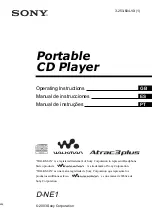
JUNOSe 11.1.0 Release Notes
12
Release Highlights
Multiclass MLPPP
Multiclass MLPPP Support
Multiclass multilink PPP (MLPPP) enables you to fragment data packets of
different priorities into multiple classes and to send high-priority packets
between fragments of larger packets. When the MLPPP bundle consists of
more than one multilink interface, multilink classes ensure that high-priority
data packets are received in the sequence they were transmitted.
With multiclass MLPPP each traffic class is mapped to a separate multilink
class. Multiclass MLPPP supports mapping of up to eight traffic classes. The
default traffic class is the best-effort class. The multiclass MLPPP feature also
supports fragmentation and reassembly on the multilink classes.
As part of this feature, the following SNMP MIB objects have been added to the
Juniper Networks PPP MIB:
juniPppMlPppLinkConfigMultilinkMulticlass
juniPppMlPppLinkConfigMultilinkMaxClasses
The following SNMP MIB objects have been added to the Juniper Networks PPP
Profile MIB:
juniPppProfileMultilinkMulticlass
juniPppProfileMultilinkMaxClasses
The following commands have been added or enhanced to support multiclass
MLPPP configuration and monitoring:
Change in existing behavior
: New feature added as described here.
Packet Mirroring
Support for Packet Mirroring Trigger
You can now trigger packet mirroring for PPP and DHCP subscribers through
the following new subscriber identification methods:
Agent Circuit ID
Agent Remote ID
DHCP Option 82
ppp multilink multiclass
show ppp interface mlppp config
ppp multilink multiclass
fragmentation
show ppp interface mlppp full
ppp multilink multiclass reassembly
show ppp interface mlppp statistics
ppp multilink multiclass traffic-class
















































